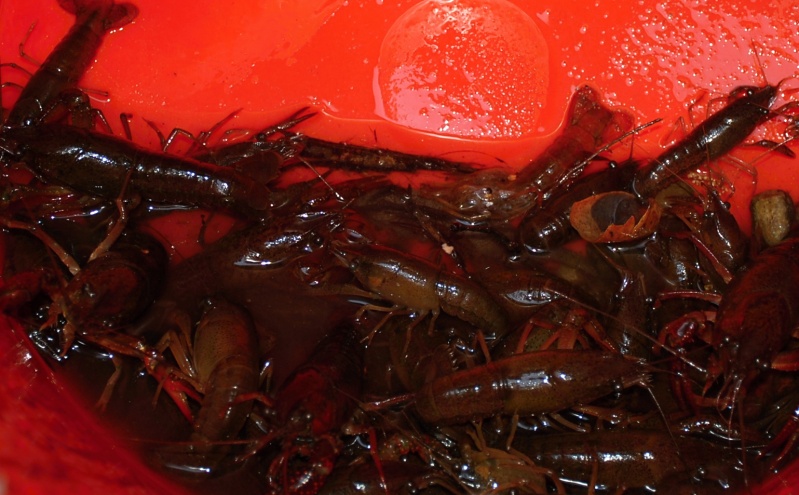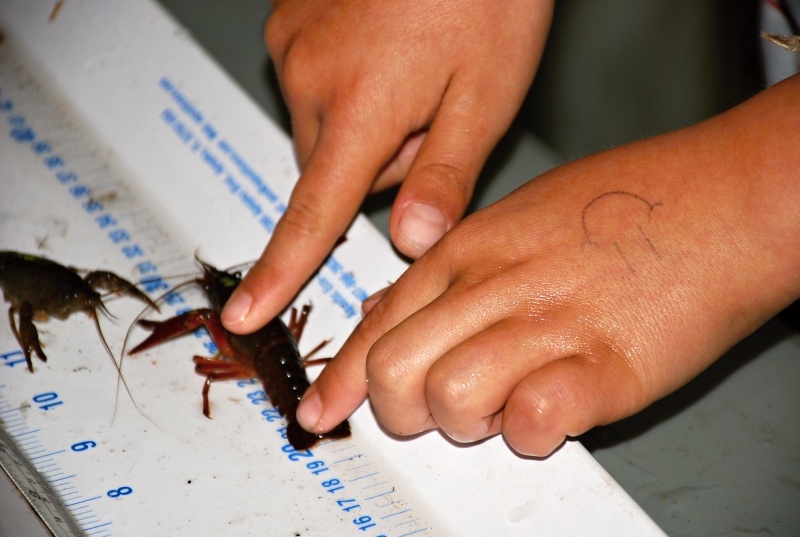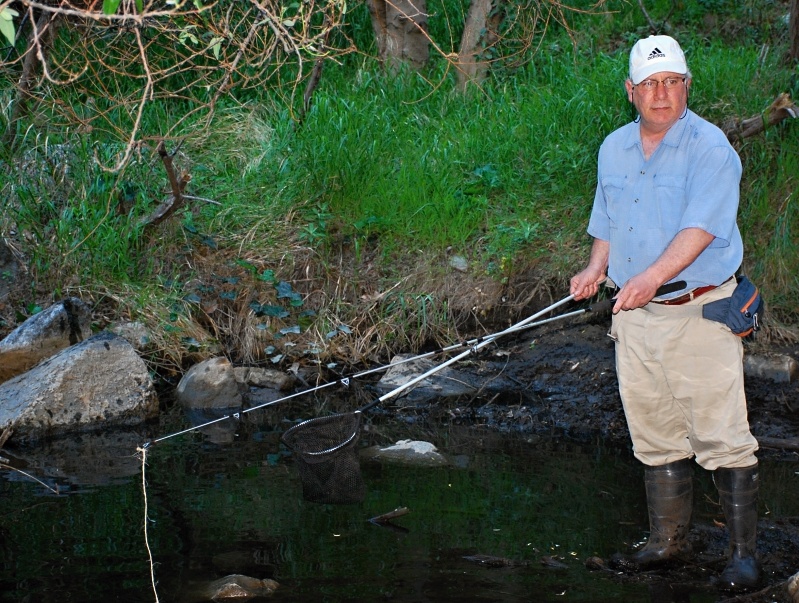One small critter is making one big mess in Topanga Creek.
In the slow-moving creek waters, they lurk under rocks, skitter around the silty muck and hide under piles of sticks and leaves, tentacles waving and pincher claws grasping for anything that may be food.
These days, food to these invasive crayfish means native frog, fish and newt eggs and babies. But one April morning, food also meant dangling Farmer John hot dogs held by intrepid crayfish hunters determined to catch as many of these nonnative Louisiana red swamp crustaceans as possible.

At this year’s Crayfish Roundup, parents, teenagers, college kids, youngsters and seniors were carefully wading in the creek to find a good location for their hot dogs-on-a-string. Equal parts science, social outing and community response, these roundups have been going on since 2012 as a way for citizens to help biologists reduce c-fish numbers which will give natives – including the beloved steelhead trout and the rare western pond turtle – a fighting chance for survival.
This year, the population of crayfish has exploded due in part to the ongoing drought which has created the perfect incubation habitat for the shelled invaders: warm waters, less water flow and plenty of debris for cover.
Searching for those hiding crayfish at the roundup were families and friends, but strangers also quickly created teams of hot dog stringers and netters who worked in a delicate dance of careful lifting, net-scooping and plopping crayfish into a red plastic bucket.

Casting lines to tempt hungry crayfish into a waiting net is an exercise in patience as one mother tried to explain to her two young daughters. “You have to sit and wait,” she told them as they stumbled through the waters to find a suitable rock. For some kids, seconds without movement was excruciating, but others were up for the child vs. crustacean challenge.

There were many pleas (“Just bite it!” “You know you love hot dogs!” “Come on, big Daddy. Come on!”) and frustrated phrases when crayfish fell off (“NOOOOOOOOOOO!” “You have got to be kidding me!” “You little …AHHHG!”)
Not only did participants net as many of the shelled invaders as they could, they also recorded their size and sex, and then bagged up the crayfish to be used as treats for rehabbing critters at nearby wildlife rescue centers.

“We get a lot of young kids wanting to be marine biologists who think it’s a sexy job after watching Discovery Channel or NatGeo,” said Rosi Dagit, a senior conservation biologist with the Resource Conservation District of the Santa Monica Mountains (RCDSMM), part of the management that oversees the crayfish removals. “But so many of them have never been in the field, come out here and realize it’s no fun to get wet and cold or stick their head under rocks. This is a good way for them to test the water of what it means to be a working biologist.”

Indeed, SoCal biologists worked overtime in the late 1990s to learn about the Louisiana crayfish when the invasion started after a resident unknowingly released leftover bait into the creek.
Since its unfortunate introduction, the crustaceans have bullied their way around Topanga Creek, and have infiltrated a section of the creek that is home to the most diverse populations of amphibians, reptiles, fish, bugs and birds.
For many years, students from Topanga Elementary were able to keep the population under control. The El Nino rains of 2005 did wonders for flushing the shelled invaders out to the ocean, but hopes were dashed when they were soon found again muscling back into their old haunts.
At the April roundup, in 3 ½ hours the volunteers netted about 500 crayfish. “There’s no way we are going to eradicate them either today or soon,” said Dagit, “but at least we can give the natives a little more breathing room and a better chance. That’s the best we can do for right now.”
Dagit and others are already plotting moves for next year’s rain dance. In the meantime, bring out the hot dogs, nets and string. The crayfish are hungry.

(**Note: these crayfish while living in clean water are bottom feeders, so probably not suitable for eating. And don’t think about sneaking into the area to snag some quick grub: special permission is needed to remove the crayfish, as invasive as they are.)
— Story and photos by Brenda Rees, Editor
